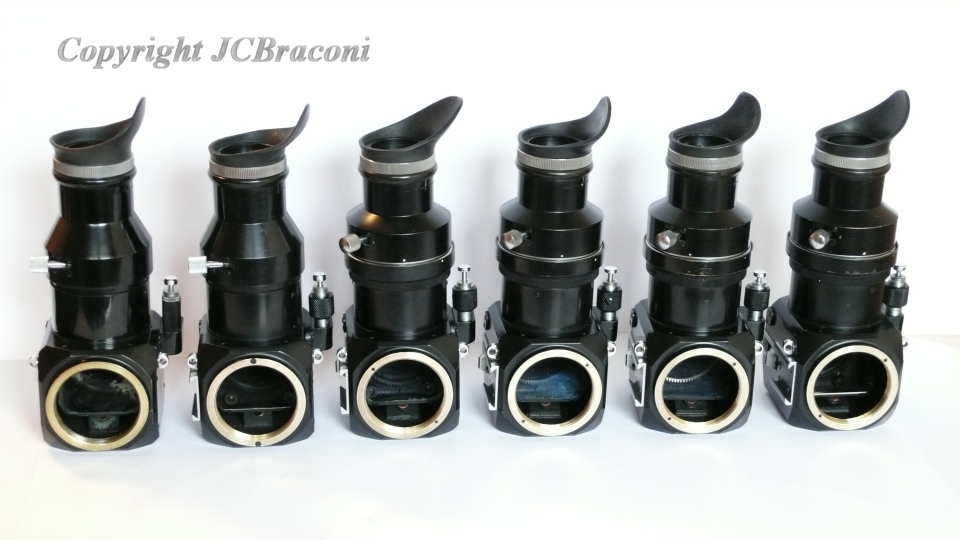 |
|
PLOOT as was illustrated in early literature, see below, showing the housing complete with camera and lens.
|
|
|
The first reflex housing, catalogue code PLOOT, issued in 1935.
The lens
screwed in a cube shaped body of the reflex housing which in turn screwed into
the camera. Optical thickness was 62.5mm.
The image was viewed through a 5x magnifier and for accurate focusing, a built
in 30x magnifier could be swung in by the appropriate lever.
The 5x magnifier
had to be removed to use the 30x one, but its socket, which was not removable in
the earlier models, served as a light shied.
The ground glass screen had to be
used upright, but vertical could be taken by loosening a locking lever at the
side and rotating the camera 90°; at the same time the mask defining the picture
format automatically rotated to show the correct image area.
Illustration of some PLOOT, reflex housings variations, during their production ran until 1951 :
 |
|
PLOOT as was illustrated in early literature, see below, showing the housing complete with camera and lens.
|
|
|
The VISOFLEX I
The VISOFLEX I
had the same optical depth as the original Mirror Reflex Housing - 62,5mm - so
the same lens fitting applied.
Later in 1955 a version with a bayonet fitting for M cameras was
available. The body shape differed from the PLOOT being cylindrical instead of a
cube.
Illustration of
some VISOFLEX I variations :
From the left three screw mount versions :
1st early model
with front silver chrome flange with LVFOO 5x, vertical plain black paint
viewfinder,
2nd without front silver chrome flange with LVFOO 5x, vertical cracked black
paint viewfinder,
3rd scientific model IFLEX, with interchangeable focusing screen (clear or
grinded).
Next three are
bayonet mount versions with :
PEGOO 45°, 4x,
viewfinder,
PAMOO 90°, 5x, viewfinder and
LVFOO, 5x, vertical cracked black paint viewfinder.
|
|
Illustrated under is a special Visoflex I where there is a mechanic build-in connecting system to synchronyze the mirror let up and the shutter release. Have to know who was the builder of this system.
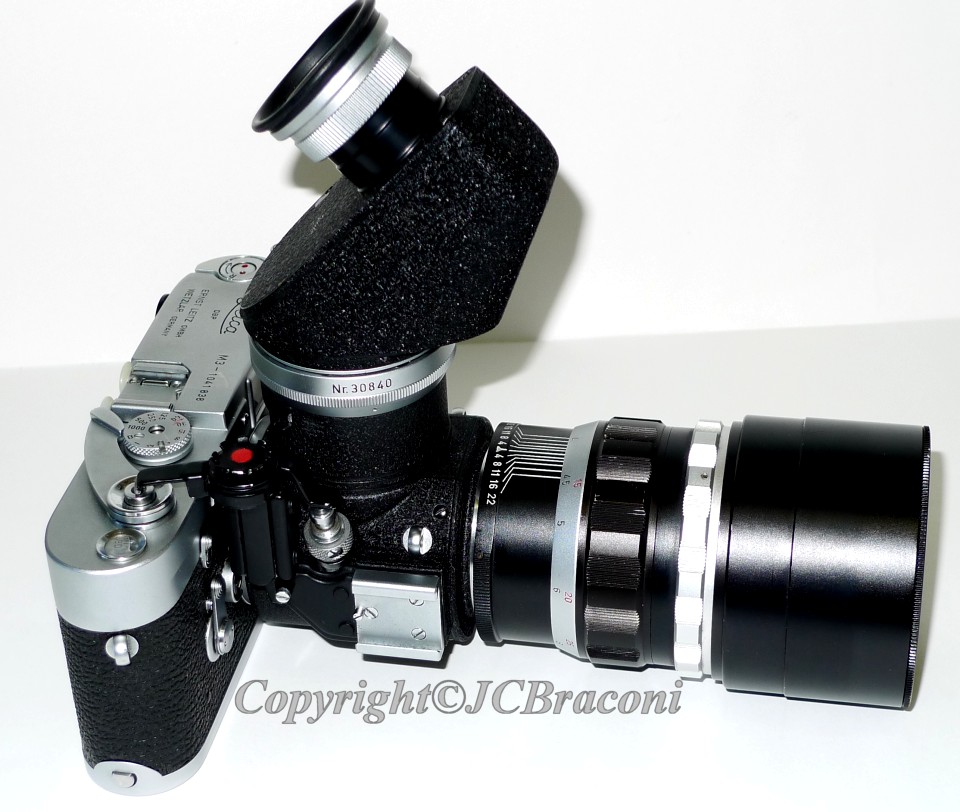 |
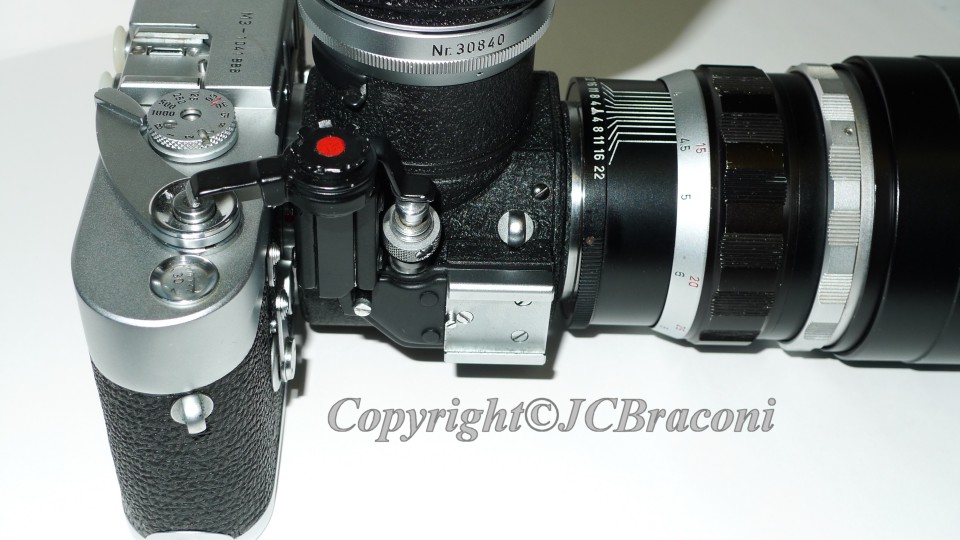 |
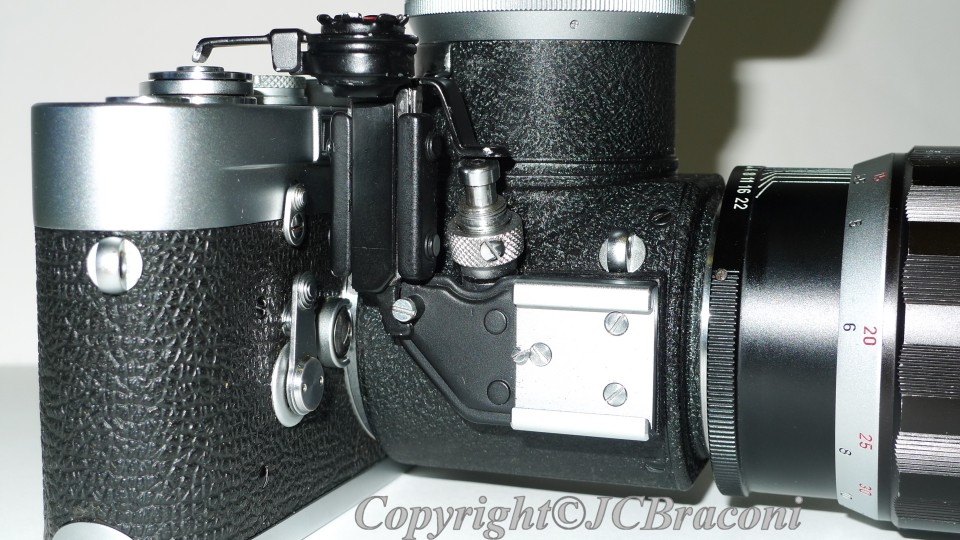 |
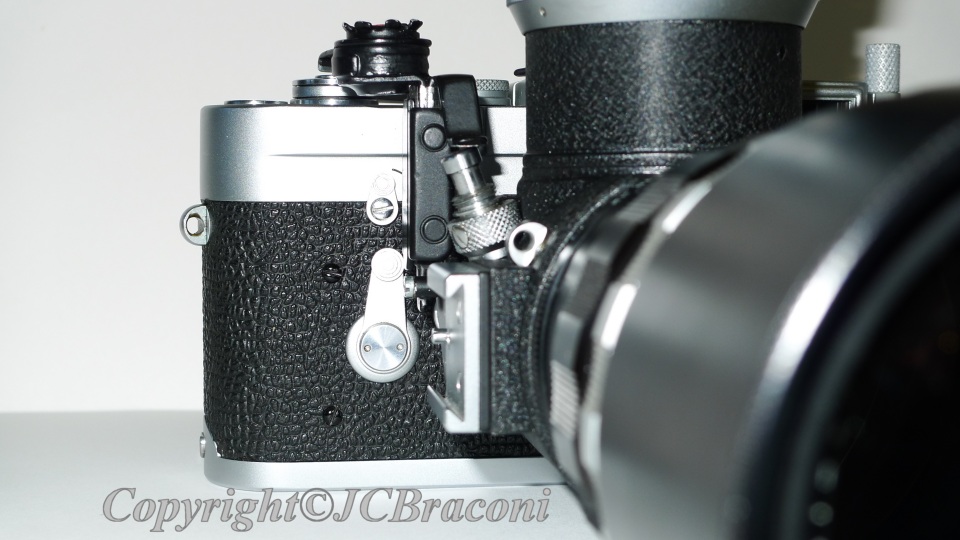 |
The VISOFLEX II
In 1960 Leitz
introduced a lighter and much more compact Visoflex II for both screw mount
and M mount Leica.
The optical thickness reduced at 44mm to allow lenses of 65mm and above to be
focused to infinity. It was suitable to be hand held. The whole assembly had to
be turned for vertical pictures. The released lever at the side controlled the
mirror and at the same time acted directly on the shutter release button of the
LEICA. The mirror had to be reset by a small lever at the side. Available for
crew and bayonet mount cameras.
First illustrated
: a screw mount version with straight shutter lever,
second and
others are M mounts and curved shutter levers.
Eye level 4x and vertical 5x magnifiers were
available like the third illustrated.
A micro Visoflex II with interchangeable screen scientific/medical use was also
available, fourth illustrated.
In 1962, E
Leitz Inc. New York listed the Visoflex IIa, a Visoflex II with a rapid return,
fifth illustrated.
Visoflex I lenses were useable on the Visoflex II by adding the OUBIO (16466)
adapter.
|
|
An early model with the engraving of the trade mark in the middle of the body
|
|
The VISOFLEX
III
The Visoflex III was announced in 1963 with the facility to be fitted to or
removed from the Leica M as quickly as a lens.
It was no
longer necessary to remove the 4x eye level viewfinder to attach or remove the
housing
The new three position mirror action control was well received by photographers
who had to work very quietly.
For some use facilities the 5x vertical viewfinder, OTVXO can be used, as on the Visoflex II.
In addition to the standard model Leitz supplied units for scientific/medical
use. A rather unusual looking variant is the EndoVisoflex III with Compur
shutter and Polaroid magazine back. Please note the red Leitz logo.
The 4x viewfinder has been raised to make free the rotation of the Polaroid
magazine back.
A micro Visoflex III with interchangeable screen and special vertical
viewfinder.
An another EndoVisoflex III with special 90° 4x viewfinder clear and glass
focusing screen.
|
|
The Filter Turret /
14116 issued in 1963 for Visoflex II and III allowed the user to have a set of 3
filters available in between the Visoflex and the Tele Lens from 125mm to 400mm
focal length, in place of the OUBIO adapter. The turret holding a double sized
bushes tripod foot, the turret can be tilted 90° for vertical format auctioning a
little lever.
Illustrated with a M3 Leica camera
a Visoflex III and a Telyt 4/200mm lens, late model, "all black".
|
|
from the inside the 3 filter E43 rotating holding plate.
|
|
14111, 14112, 14413 and 14114
And the Leica leaflet 1964 printed.
|
|
|
|
|
|